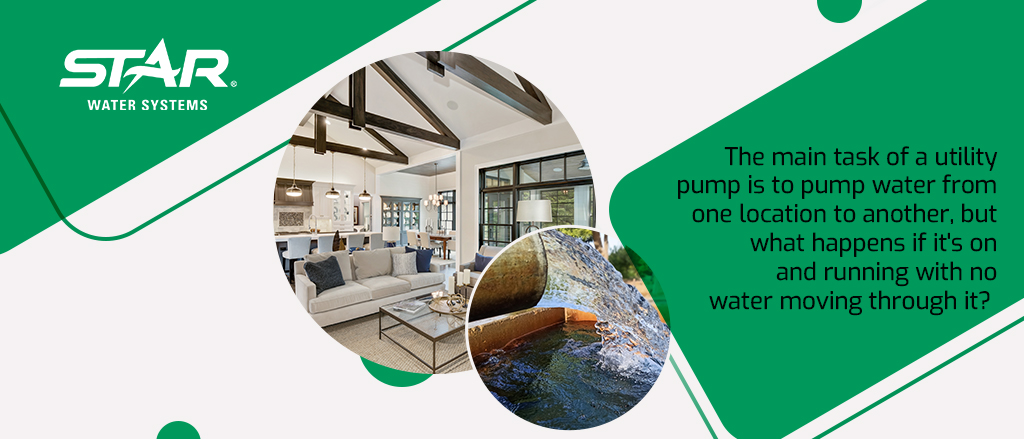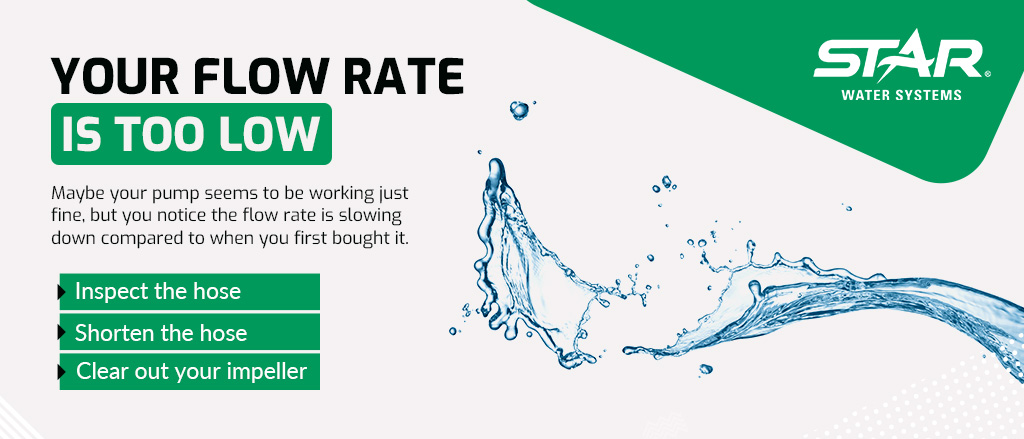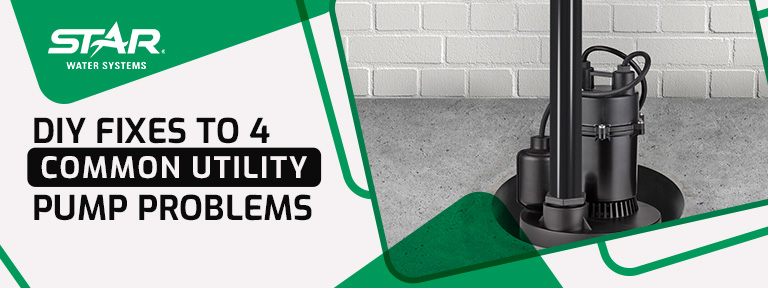DIY Fixes to 4 Common Utility Pump Problems
Utility pumps are a great multipurpose tool anyone can use. Whether you use them to move water out of a basement, pool, aquarium or construction site, utility pumps will keep your space free of water. If you live or work in an area prone to flooding or high volumes of rainfall, utility pumps keep you sane and protect your space from suffering serious water damage.
While these pumps are usually high quality and have a life span of about 10 years, they aren’t always foolproof. Sometimes, accidents happen or mechanisms misalign, and suddenly your pump isn’t removing water.
If you notice your utility pump isn’t working properly, you don’t have to stress. You can try some easy do-it-yourself fixes to mend the problem. If those don’t work, you can contact a professional or consider buying a new one.
Before you try the latter option, let’s look at four of the most common utility pump problems and how to fix them.

1. Your Pump Is Running But Discharging No Water
The main task of a utility pump is to pump water from one location to another, but what happens if it’s on and running with no water moving through it? Here are three solutions to try:
- Check for kinks: The first part you should check is the hose leading from the pump to the other location. Kinks in the hose can form without you knowing it. Even once you straighten the hose, you should check it for any additional kinks. Kinks prevent water from freely flowing through, and the amount of water discharged can vary from a small trickle to nothing at all.
- Clear out clogs: Rather than a kink, your hose or inlet might suffer from a clog. The water your pump sucks up isn’t always the cleanest and can have some gunk in it. This gunk can easily cause a buildup that prevents water from flowing through. Unhook your hose connection and check for debris, and be sure to inspect both the pump and hose.
- Lower the discharge height: Depending on the horsepower (hp) of the pump you have, the height of the discharge area can cause a problem. A smaller hp will not be able to force the water up great heights. If you don’t have water at the discharge site and it’s at a higher elevation, reduce the discharge height.
2. Your Motor Is Running Too Hot
If you notice your pump seems to be slightly hotter than usual, something might be wrong. Your pump should not be hot to the touch when all the elements work together. Here are three solutions to try when your pump runs too hot:
- Increase hose diameter: Having a restrictive discharge hose can also cause your pump to run hotter. Using a smaller tube than your machine requires will cause the pump to force the same amount of water through a smaller area. This restriction makes the pump work overtime as it tries to forcibly move the water to the discharge site. Increase the hose diameter to 3/4 inches if it is not already.
- Remove debris: Clogs can also result in the motor running too hot because the machine cannot push the water through the clog or kink. Straighten out your hose and remove any buildup you see. This solution works in tandem with no water at the discharge site.
3. Your Flow Rate Is Too Low
Maybe your pump seems to be working just fine, but you notice the flow rate is slowing down compared to when you first bought it. In some instances, you need the flow rate to be normal or faster to get as much water out as possible. Anything less can seriously damage your space. Here are two solutions to try:
- Inspect the hose: Your biggest culprit for a low flow rate is a kinked, clogged or damaged hose. Remove the discharge hose and check for signs of blockages inside. If you notice any, remove the clog as best you can. For kinks, simply straighten out the hose to allow more water flow. In rare instances, something may have damaged your hose and water is leaking out somewhere. Inspect the hose for signs of damage or watch to see if water escapes somewhere along the length of the hose.
- Shorten the hose: Longer discharge hoses are not always better. While they give you enough distance to have a discharge site anywhere, they cause your pump to work harder to pass the water through. Your machine may still be pumping at a normal rate, but the water has to travel through a long hose. Once you shorten the hose, you will notice a drastic increase in water flow.
- Clear out your impeller: A low flow rate may be caused by a clogged impeller. In this case, clear out the obstruction to restore your pump’s normal flow rate.

4. Your Pump Will Not Run
You turn your pump on, but nothing happens. The pump does not power up, and no water flows through. What should you do if your utility pump will not run at all? Here are two solutions to try:
- Check for power: In the heat of the moment, we rush things and may forget to plug in the pump. Ensure you plug the pump into a 115-volt outlet. If it is plugged in, check for signs of damage to the plug itself. Are the prongs bent or corroded? Finally, if nothing seems wrong with the pump itself, check that the outlet is working properly. Plug a receptacle tester into the outlet and see if there is power. If not, the outlet is most likely your problem.
- Let it cool down: When you use your pump for an extended period, the overuse can cause the motor to overheat and turn off. Utility pump motors come with an automatic thermal protector. Try waiting about 15 minutes for the motor to cool down and turn it on again.
It May Be Time to Replace Your Utility Pump
Your hose is likely the biggest culprit when your utility pump isn’t working properly. However, if you’ve exhausted all your DIY utility pump troubleshooting options and your machine is still not working correctly, it may be time to replace it. If you can’t fix your utility pump at home, buying a new one from a quality dealer could be the best choice. Star Water Systems can help you get a new pump in whichever configuration you need — condensate, submersible or transfer.
Locate a retailer near you to purchase one of our systems.
 Buy Now at Lowes
Buy Now at Lowes